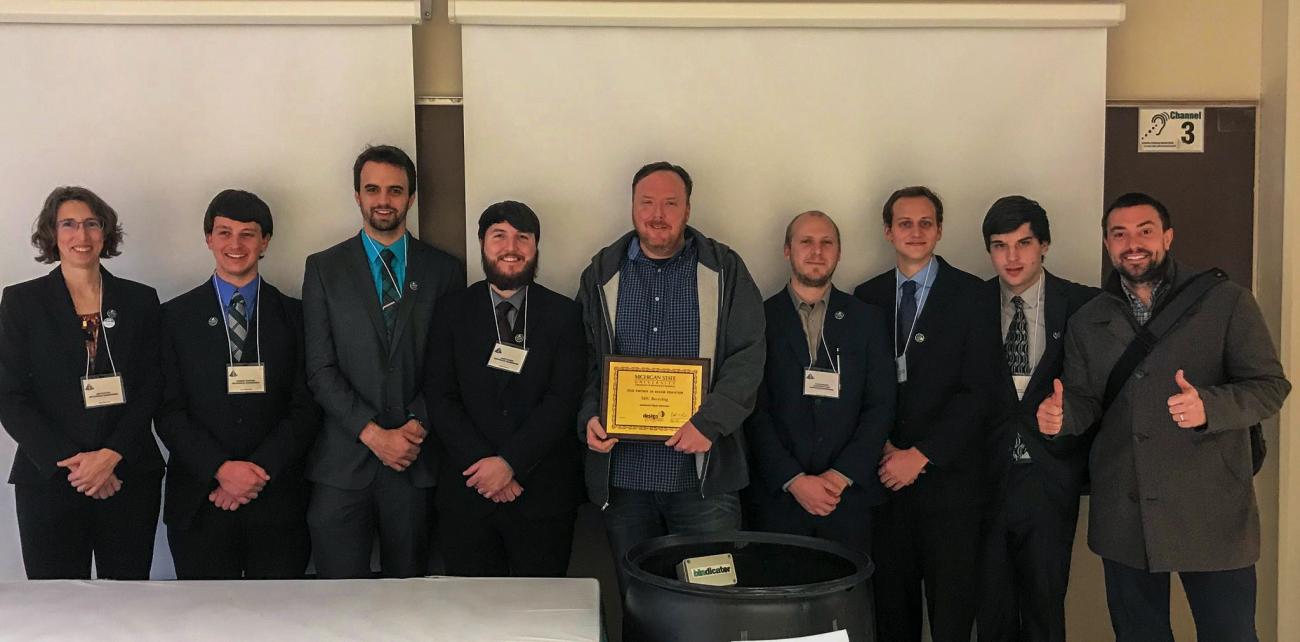IPF sponsors engineering students’ development of trash bin capacity sensor

April 9, 2019
March 26, 2019
The Bindicator, is a battery-powered sensor system that attaches to a waste bin, and communicates with the Surplus Store and Recycling Center’s (SSRC) collections software, sensing bin capacity and indicating if the container needs to be serviced.
During football games and other big events there are up to 800 bins scattered around campus. As you can expect, not all bins are full when they’re scheduled to be emptied. The hope with the Bindicator is to reduce the number of container services by first communicating with the sensors to determine capacity, then servicing only those that need it.
The prototype was created over fall semester as part of a capstone project by a collaborative team of Mechanical Engineering and Electrical and Computer Engineering students who consulted with SSRC and Landscape Services staff during its development.
After 15 weeks of research, development and tinkering, the students had built the sensor system, which they named the Bindicator. In December the team presented at Design Day, an annual event hosted by the College of Engineering.
“The technology isn’t new to the market,” one student said, “but the affordability is. Companies today offer a similar service for $25 to $35 per bin per month, plus the purchase of a proprietary software.”
The cost to operate the Bindicator is estimated to be $102 per bin; but there is no monthly service charge. Compared to the price of existing services, the students’ innovation would save thousands of dollars annually.
The development team performed a series of tests to determine the Bindicator’s ability to stand up to debris, liquid, harsh outdoor conditions and physical beatings. The system passed with flying colors.
Though the Bindicator is still in the prototype stage, implementing bin level sensor technology will advance SSRC’s goal of full bin collections, thus improving efficiency. A second capstone project is underway to implement a functional pilot of the sensor technology.
